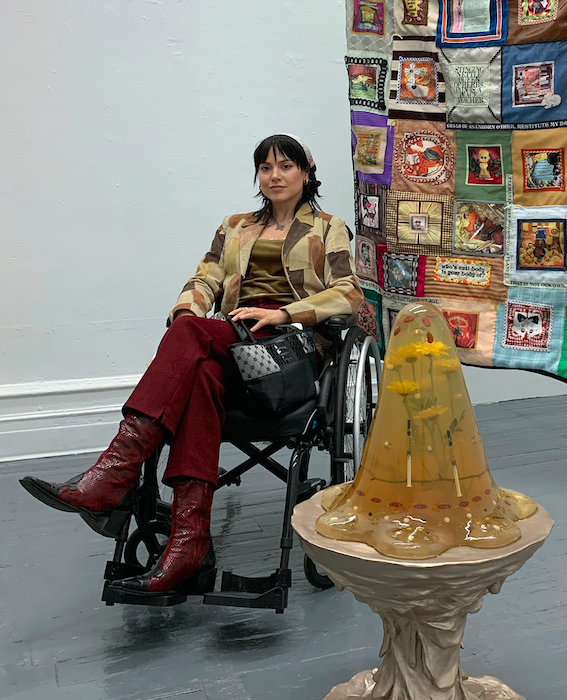Indigenous art has often been linked to tourism and the idea that most artists have to “dance for pay,” in other words, to make a profit they must solely make non-political artwork that appeals to the market. Legendary Cheyenne artist Hock E Aye VI Edgar Heap of Birds wants to change this practice and the perception that the art market is rarely influenced by authentic Native Americans like himself.
Heap of Birds creates powerful art that reflects reality in his eyes, continually trying to persuade America to look back and assess its history. He has compared his art to “sharp rocks” like arrowheads of the past, an appropriate metaphor for his condemning critiques regarding the loss of autonomy for Native Americans. Concentrating on the survival of Native peoples in modern society, Heap of Birds intends to honor indigenous citizens of ancient and contemporary communities, while engaging the non-Native public to gain a wider cultural and historical understanding.
Throughout his four-decade-long career, Heap of Birds has warranted words as weapons. The words and phrases he scrawls on his paintings and monoprints act as contemptuous indictments of the odious history of appropriation and violence against indigenous people. His words counterbalance biased historical narratives regarding the Native presence.

For example, Heap of Birds’ series of monoprints, Secrets of Life and Death and Dead Indian Stories, are text-based works expressing brutal truths about the subjugation of Native Americans in the United States (i.e. unending indigenous poverty, deficient educational opportunities, poor housing, police injustice, high rates of suicide, lack of political representation and dishonored treaties of promise). Other pieces are more personal, reflecting on his own subjective Native experience, like his ever-evolving Neuf series of abstract paintings. These are derived from his memories of the Cheyenne and Arapaho Reservation landscape where he lived for over ten years on 500 acres of secluded Native lands. While there, he hunted, kept a garden, built and worked in his studio, and raised his two sons.
Heap of Birds is not only spreading his wisdom and culture through art but also through higher education. He taught at prestigious universities like Yale and RISD, exploring issues of the contemporary artist on local, national and international levels. He favors visiting Long Beach State University where the students, faculty and staff showed great interest in exploring his concepts and empathy towards his artistic journey.
Much to our appreciation, this fascinating artist is having an LA moment with solo exhibitions at Pitzer College (currently on view) and a rare gallery exhibition at Garis & Hahn (ending on March 10th). Featuring works from six different series made over four decades, the exhibition marks Heap of Birds’ first Los Angeles show in ten years. He uses the power of words and color (particularly red and blue) to uncover the hypocrisy of America through the lens of history and our current daily existence and he confronts these serious, overwhelming issues head-on.



His work also deconstructs the mistaken belief that all Native Americans are part of only one tribe. In another series, Native Hope, Heap of Birds honors the indigenous citizens from the local community by creating signs with the state listed backward, while adding a listing for the local tribe. “The reversal or backwards treatment of the colonial names of states and provinces found on each Native Hosts panel is meant to turn around the state or province and their occupants in order to see this original Native world in a new manner. By writing California backwards I am asking Californians to look back into their history,” explains Heap of Birds. “The signs are made by elder women from the Tongva tribe local to Los Angeles.”

These exhibitions come at a time where society (not just the art world) is becoming more inclusive and looking back to revise history. When asked what is something all people should know about Native Americans, Heap of Birds told Art Zealous, “Tribes are sovereign nations with treaties and rights, native people have suffered and continue to suffer at the hands of this republic. Native people are expressive individuals not just a race of people.”
top image// courtesy of Sophia Schneider/Art Zealous



